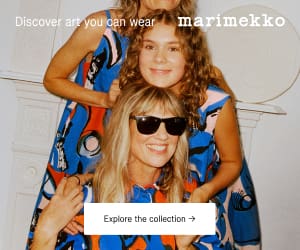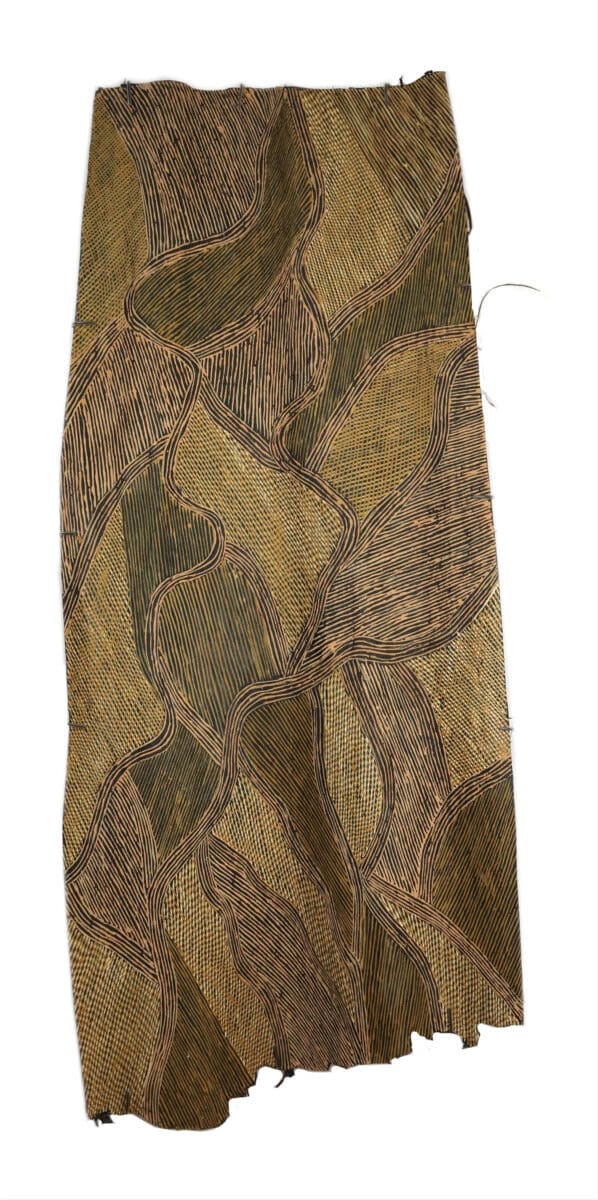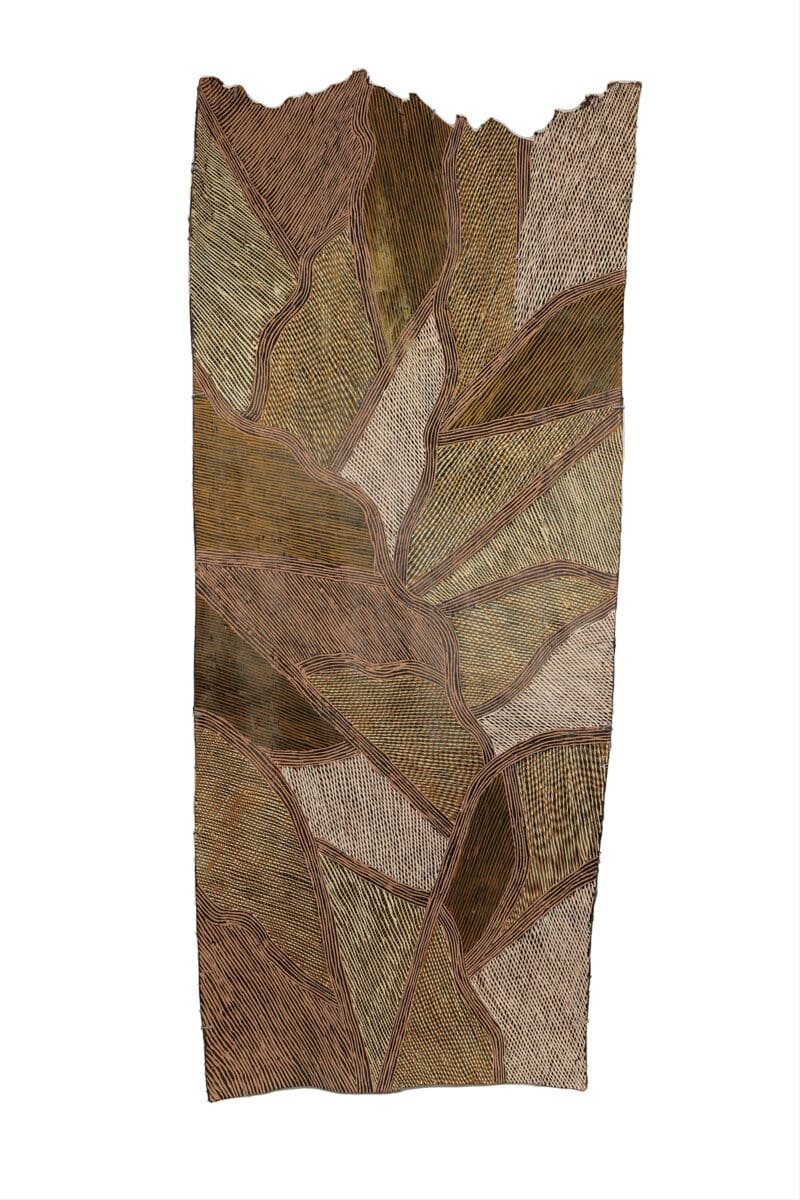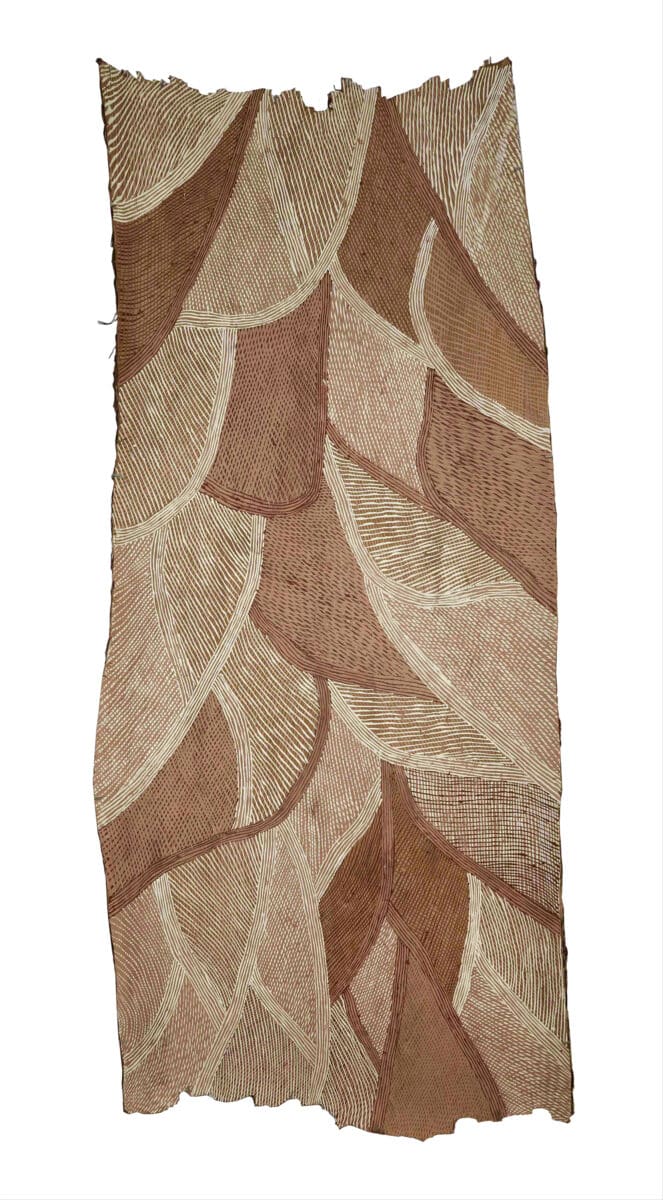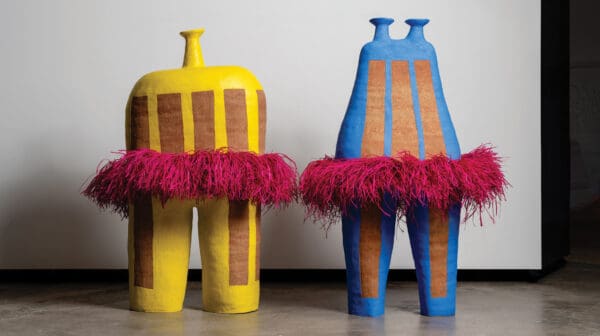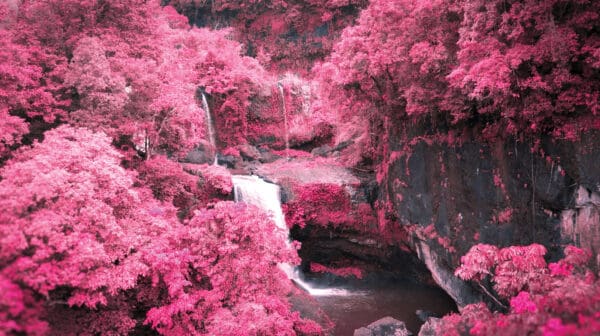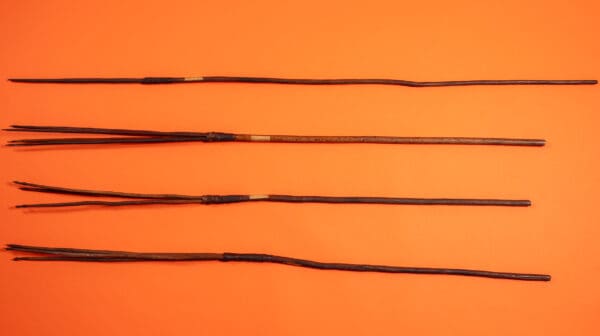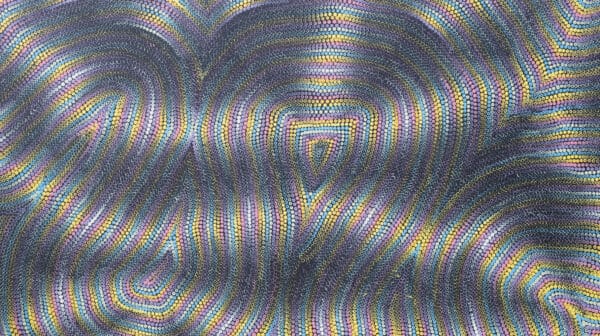The second solo exhibition from Dhopiya Yuŋupingu draws on the shared histories between the Yolŋu and the Macassans, the latter from the Indonesian island of Sulawesi, celebrating a trade in trepang (sea cucumber) that predated European contact with Australia. Painted on pots, barks and memorial poles, Yuŋupingu’s images poetically evoke connections that extend back through time. As she says, “The Macassans and the Yolŋu danced together. The dance represents how we put up the flag and when the big wind blows the wind will tear the flag. That flag, it is known as Dhomala and Djarridiarri… I still paint this story, to this day.”
Born in 1950, Yuŋupingu is a senior elder from north-east Arnhem Land, daughter of Muŋgurrawuy Yunupiŋu. Her family includes many significant First Nations achievers, and among her siblings are former Australians of the Year, Galarrwuy and Mandawuy Yuŋupingu.
“I paint this flag, this sail, this material, the flag that was given to us by the Macassans. This flag is for Yolŋu and Macassans, this painting that I paint here, it is from the beginning, from a long time ago. From before we were born.”
While Yuŋupingu’s debut at Sullivan+Strumpf in 2022 also depicted the exchange between the Yolŋu and the Macassans, and the stories handed down, this show is different. The new work incorporates more abstract elements and Galiki fabric designs, worn at festivals and funerals but also used on flags and the sails of boats that moved between Sulawesi and northern Australia. Bark paintings with sinuous patterns curve like fabric in movement, organically shaped and resembling a hanging flag.
“I paint this flag, this sail, this material, the flag that was given to us by the Macassans. This flag is for Yolŋu and Macassans, this painting that I paint here, it is from the beginning, from a long time ago. From before we were born.”
Yuŋupingu has also been selected for the 2024 Biennale of Sydney, Ten Thousand Suns. Her narratives about shared history evoke the strength of cultural connections beyond our shores.
Djärritjarri – the woven cloth
Dhopiya Yuŋupingu
Sullivan+Strumpf Melbourne
15 February—9 March
This article was originally published in the January/February 2024 print edition of Art Guide Australia.

